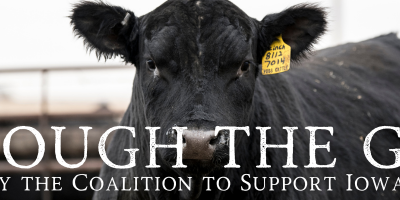CSIF Tips of the Month – July 2013
07-03-2013 in Through The Gate
Rules and Regs Highlight
Composting at confinements: Know the rules
Mortality composting is used on many farms around the state of Iowa. If your farm utilizes this practice, make sure you understand the rules that apply.
Composts cannot be in a wetland and must meet separation distances, including: 500 feet from a residence other than the farmer’s; 100 feet from a private well; 200 feet from a public well; 50 feet from property lines; and 100 feet from a flowing or intermittent stream, lake or pond.
Composting must be done on an all-weather surface that is relatively impermeable. This can include compacted soil, compacted granular aggregates, asphalt or concrete.
Mortalities must be in the compost within 24 hours. To control leachate, odors and animal scavenging, there must be a 12-inch bulking agent cover, 6-12 inches between carcasses, and a 12-24 inch base (depending on size and number of mortalities).
Remember that Iowa law prohibits discharges from a livestock composting site. In other words, compost leachate must be prevented from leaving the compost, and runoff must be properly managed.
Read more from attorney Eldon McAfee on permits, infectious disease mortalities, catastrophic events, transportation, design requirements and considerations, application of compost and more.
Siting Tip
Summer breezes: How they impact odor movement
Oftentimes people think the predominant winds in Iowa come from the north and northwest, but, in reality, those are only winter wind patterns. Generally speaking, prevailing winds in the summer come from the south, southeast and north. When it comes to odor movement, these breezes can have more of a negative odor impact due to the hot and humid conditions Iowa summers are known for.
Understanding prevailing winds and how they can impact odor movement is very important when siting a new livestock facility. The Community Assessment Model (CAM), developed by Iowa State University’s Steve Hoff, is a site-specific tool that can help identify potential odor issues with proposed sites.
For more information, or to request a CAM model for your site, contact CSIF at 800-932-2436.
Harvesting the Sun to Raise Livestock
Farmers are accustomed to harvesting corn and soybeans, but what about sunlight? A new program in Iowa is now available to assist farmers in harnessing sunlight to provide electricity for raising livestock and poultry.
Farmers have long maintained the tradition of being good stewards of the land, and their adoption of renewable energy supports their role of protecting the environment. In addition to ethanol, biodiesel and wind, solar power is now becoming an option for farmers in Iowa.
The Iowa Area Development Group (IADG) is offering a low interest loan to assist farmers with the installation of solar energy projects. The IADG Energy Bank can help finance solar energy projects on farms all across Iowa. To learn more, contact the Coalition at 1-800-932-2436 or visit IADG’s website at www.IADG.com/EnergyBank.
Quote of the Month: Rich Degner
“The Coalition has been instrumental over the years in helping many hog farmers with siting, rules and regulations. If you’re considering any changes to your livestock enterprise, your first call should be to the Coalition.” – Rich Degner, Iowa Pork Producers Association Executive Director and CSIF President
Recommended News

Through the Gate // May 2025
Stay updated with the Coalition to Support Iowa's Farmers. Discover events and more.
Read More
Through the Gate // April 2025
Stay updated with the Coalition to Support Iowa's Farmers. Discover events and more.
Read More
Through the Gate // March 2025
Stay updated with the Coalition to Support Iowa's Farmers. Discover events and more.
Read More